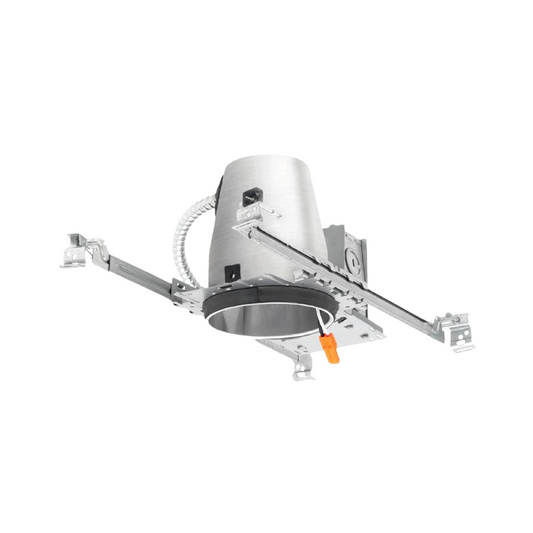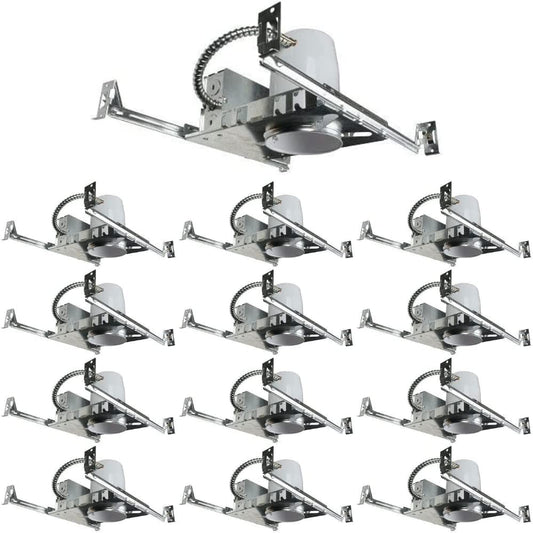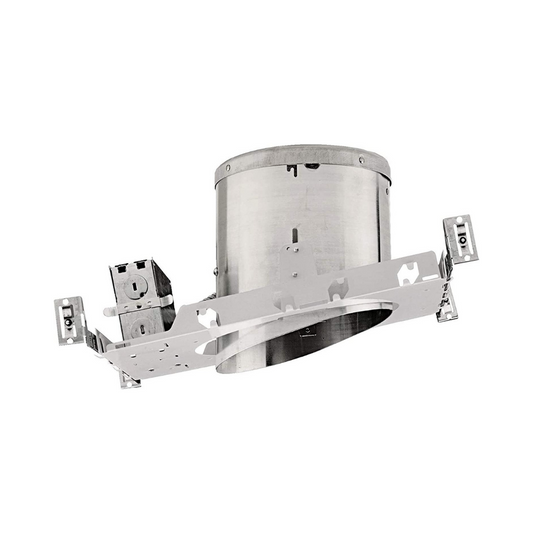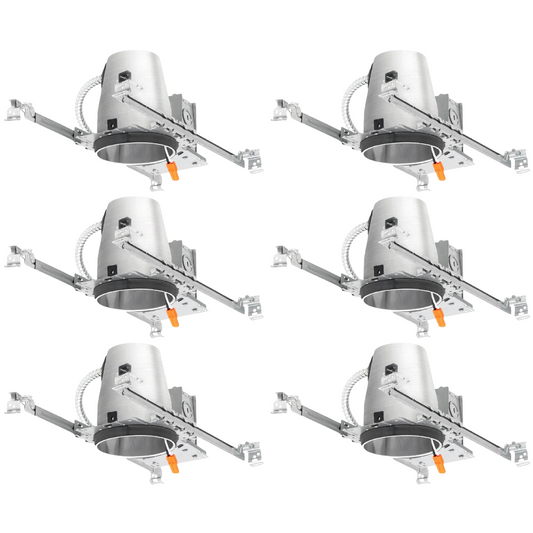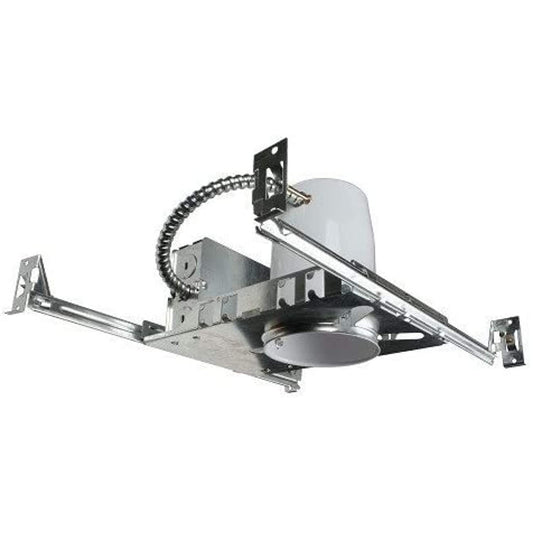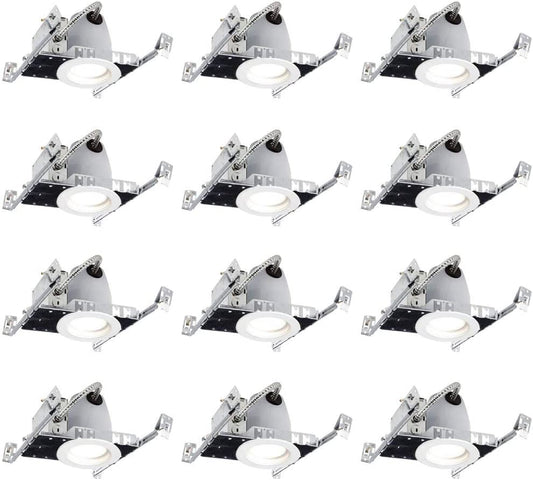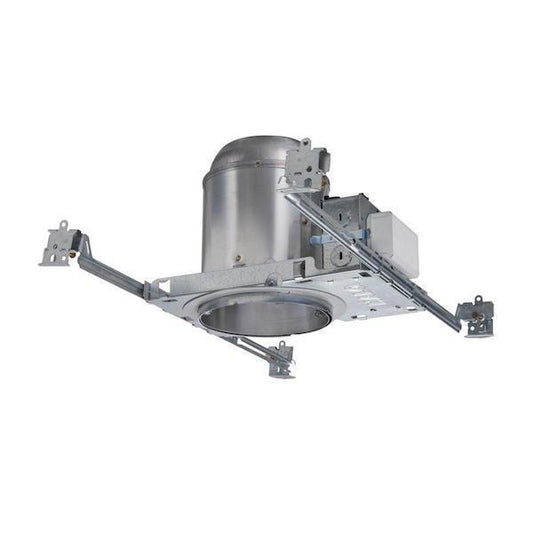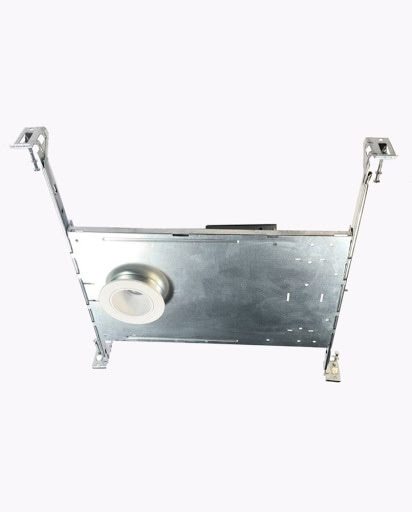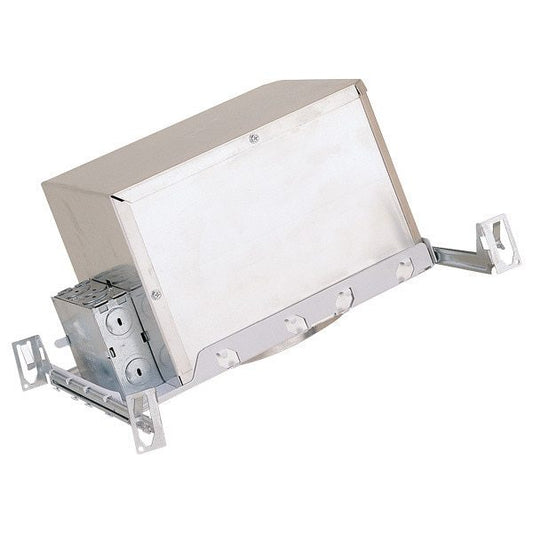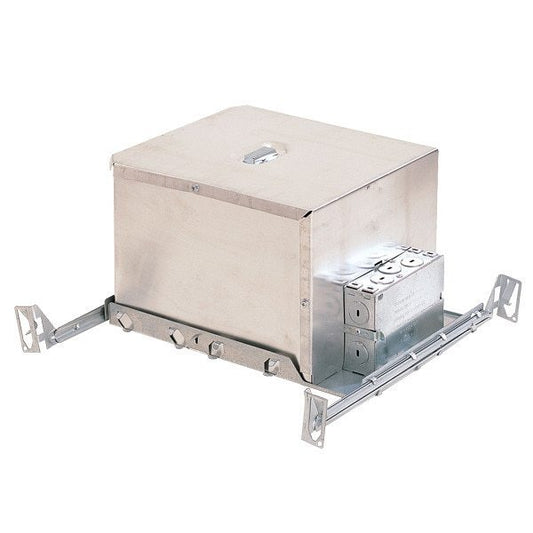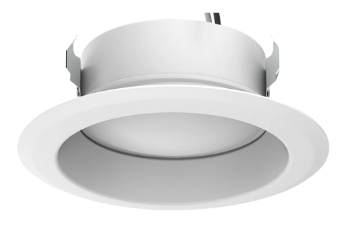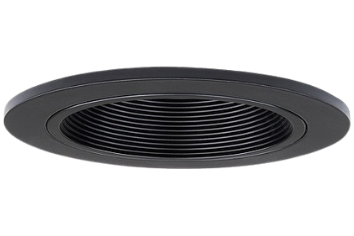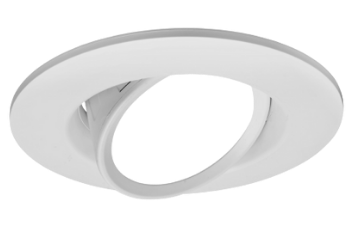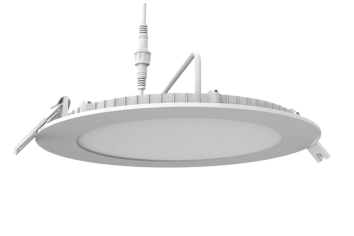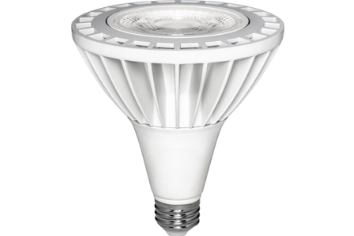Recessed lighting, also known as can lights or downlights, is a popular choice for both residential and commercial lighting applications. Here are a few factors to consider when buying recessed lighting:
Jump to a Specific Section:
- Recessed Lighting Placement
- Recessed Lighting Types
- Recessed Lighting Sizes
- Recessed Lighting Trims
- Recessed Lighting Bulb Types
- Recessed Lighting by Room
- Recessed Lighting Color Temperature
Where to Place Recessed Lighting

There are a few general guidelines to follow when deciding where to place recessed lighting:
- Type of installation: For new construction, recessed lighting is usually installed between joists, and if there is insulation, you must use an IC rated housing. For remodels, almost ceiling-mount lights can be retrofitted into recessed lights but you would have to use a remodel can.
- Spacing: As a general rule of thumb, divide the height of the ceiling by two to get the distance the lights should be from one another. 8-foot ceilings should have recessed lights every 4 feet and 3 feet away from walls to avoid creating shadows.
- For general lighting, place the fixtures evenly throughout the room, taking into account the layout and function of the space.
- For accent lighting, focus the fixtures on specific areas or objects, such as artwork, plants, or bookshelves.
- For task lighting, install recessed lighting directly overhead. Examples of task lighting include lighting for reading areas, stovetops and sinks. Install recessed lights under kitchen cabinets to have focused light on counters.
Recessed Lighting Types

- New-construction housing is used before the ceiling is installed in a new home or when adding a room onto a house.
- Remodel housing is designed to allow for installation in an existing ceiling.
- Insulation contact (IC)-rated housing is designed for direct contact with insulation.
- Non-IC housing must have at least 3 inches of clearance from the insulation above.
- Airtight housing reduces the airflow between the unconditioned space above (usually the attic) and the conditioned room below.
- Shallow ceiling housing is used in ceilings with 2-inch-by-6-inch joists.
- Slope ceiling housing allows space for the light to be angled in a sloped ceiling. Check angles before purchasing.
Recessed Lighting Sizes
Recessed lighting fixtures come in different sizes, also known as "housing." The size of the housing you choose will depend on the size of the space you are lighting and the type of bulb you are using. Here are a few common sizes for recessed lighting:
- 3-inch housing: This size is suitable for small spaces and is often used for accent lighting. It can accommodate a variety of bulb types, including incandescent, halogen, and LED.
- 4-inch housing: This is a popular size for general lighting in both residential and commercial applications. It can accommodate a variety of bulb types, including incandescent, halogen, and LED.
- 5-inch housing: This size is suitable for larger spaces and can accommodate a variety of bulb types, including incandescent, halogen, and LED.
- 6-inch housing: This size is suitable for even larger spaces and can accommodate a variety of bulb types, including incandescent, halogen, and LED.
Recessed Lighting Trims
Recessed lighting fixtures come with a trim, which is the visible part of the fixture that is installed in the ceiling. Trims come in different styles and finishes to complement the decor of the room. Here are a few common types of recessed lighting trims:
- Baffle trim: This type of trim has a flat or angled surface that helps to reduce glare and direct the light downward.
- Reflector trim: This type of trim has a reflective surface that helps to increase the amount of light that is directed downward.
- Open trim: This type of trim has no visible trim ring and is designed to give the appearance of a "hole in the ceiling."
- Shower trim: This type of trim is specifically designed for use in damp or wet locations, such as bathrooms or outdoor spaces.
- Decorative trim: This type of trim comes in a variety of styles and finishes and is designed to add a decorative touch to the room.
Recessed Lighting Bulb Types
LED bulbs are a popular choice for recessed lighting because they are energy-efficient, long-lasting, and compatible with dimmer switches. Here are a few types of LED bulbs that are commonly used in recessed lighting fixtures:
- Standard LED bulbs: These bulbs are designed to replace traditional incandescent bulbs and are available in a variety of shapes, sizes, and brightness levels.
- Reflector LED bulbs: These bulbs have a reflective surface that helps to direct the light downward and are often used in recessed cans with reflector trims.
- PAR LED bulbs: These bulbs are similar to standard LED bulbs but have a PAR (parabolic aluminized reflector) shape that helps to focus the light. They are often used in recessed cans with reflector trims.
- BR LED bulbs: These bulbs are similar to standard LED bulbs but have a BR (bulged reflector) shape that helps to focus the light. They are often used in recessed cans with reflector trims.
Recessed Lighting by Room
Recessed lighting is a versatile and popular choice for many different types of rooms. Here are a few general guidelines for using recessed lighting in different rooms:
- Living room: Recessed lighting is a popular choice for general lighting in the living room. Place the fixtures evenly throughout the room, taking into account the layout and function of the space. For accent lighting, focus the fixtures on specific areas or objects, such as artwork, plants, or bookshelves.
- Kitchen: In the kitchen, recessed lighting is often used for both general and task lighting. Place the fixtures evenly throughout the room, taking into account the layout and function of the space. Consider placing fixtures over the countertops and sink for task lighting.
- Bedroom: In the bedroom, recessed lighting is often used for general and accent lighting. Place the fixtures evenly throughout the room, taking into account the layout and function of the space. For accent lighting, focus the fixtures on specific areas or objects, such as artwork or a reading nook.
- Bathroom: In the bathroom, recessed lighting is often used for general and task lighting. Place the fixtures evenly throughout the room, taking into account the layout and function of the space. Consider placing fixtures over the vanity and shower for task lighting. Be sure to use fixtures that are rated for damp or wet locations.
- Office: In the office, recessed lighting is often used for general and task lighting. Place the fixtures evenly throughout the room, taking into account the layout and function of the space. Consider placing fixtures over the desk and any other work surfaces for task lighting.
- Outdoor spaces: Recessed lighting can also be used in outdoor spaces, such as patios and decks. Be sure to use fixtures that are rated for outdoor use and are protected from the elements.
Recessed Lighting Color Temperature
The color temperature of a light bulb refers to the appearance of the light it produces, measured in degrees Kelvin (K). The lower the number, the warmer and more yellow the light appears; the higher the number, the cooler and more blue the light appears. Here are a few common color temperatures for recessed lighting:
- Warm white (2700-3000K): This color temperature is often used in living rooms and bedrooms for a warm, cozy atmosphere.
- Soft white (3000-3500K): This color temperature is similar to warm white but with a slightly cooler, more neutral appearance. It is often used in general lighting applications.
- Bright white (3500-4100K): This color temperature is often used in kitchens and offices for a brighter, more energetic atmosphere.
- Cool white (4100-5000K): This color temperature is often used in bathrooms and other spaces where a bright, clean appearance is desired.
- Daylight (5000-6500K): This color temperature is often used in spaces where a natural, daylight appearance is desired, such as galleries and art studios.

